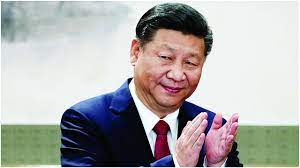Unveiling the Secrets Behind China’s Meteoric Rise: A Deep Dive into the Factors Driving Success

Introduction:
In the landscape of global geopolitics and economic prowess, few stories have been as compelling and transformative as the rise of China. From a nation grappling with the aftermath of historical challenges to emerging as an economic juggernaut and a key player on the world stage, China’s ascent has been nothing short of remarkable. This comprehensive exploration seeks to uncover the intricacies and secrets behind China’s unprecedented success, delving into the economic, political, and social factors that have fueled its meteoric rise.
Historical Context: Overcoming Adversity
China’s journey to becoming a global powerhouse is deeply rooted in its historical narrative. The nation faced centuries of internal strife, foreign invasions, and economic instability. The 20th century witnessed the turbulence of the Chinese Civil War, the Japanese occupation, and the establishment of the People’s Republic of China in 1949 under the leadership of the Chinese Communist Party (CCP). The founding of the PRC marked the beginning of a new era, setting the stage for China’s transformation.
Economic Reforms: Deng Xiaoping’s Visionary Leadership
The turning point in China’s economic trajectory came with the leadership of Deng Xiaoping in the late 20th century. Deng’s pragmatic approach and visionary economic reforms, famously encapsulated in the phrase “Socialism with Chinese characteristics,” ushered in an era of unprecedented growth. The introduction of market-oriented reforms, the opening up of the economy to foreign investment, and the establishment of Special Economic Zones (SEZs) laid the foundation for China’s economic miracle.
The Role of Globalization: Leveraging International Trade
China strategically embraced globalization, positioning itself as the “world’s factory.” By leveraging its abundant labor force and implementing export-oriented policies, China became a manufacturing hub, supplying goods to markets around the globe. The integration into the global supply chain and the World Trade Organization (WTO) membership in 2001 further propelled China’s economic expansion, making it an indispensable player in the interconnected world economy.
Technological Leapfrog: Innovation and Infrastructure Development
A key element in China’s success story is its commitment to technological advancement and innovation. The nation embarked on ambitious initiatives to develop a knowledge-based economy, investing heavily in research and development. Projects like “Made in China 2025” outlined a roadmap for achieving dominance in high-tech industries, artificial intelligence, and green energy. Additionally, China’s rapid development of infrastructure, including high-speed railways and 5G networks, showcased its determination to stay at the forefront of technological progress.
State-Led Capitalism: Balancing Central Control and Market Forces
China’s unique economic model combines elements of state-led capitalism with a market-oriented approach. The CCP maintains a strong grip on strategic sectors and major industries, guiding the direction of economic development. This hybrid system allows for centralized planning while also harnessing the dynamism of market forces. The government’s ability to adapt policies swiftly and implement long-term plans has been a critical factor in China’s sustained economic growth.
Education and Human Capital: Nurturing a Skilled Workforce
Recognizing the importance of human capital, China prioritized education and skill development. The nation’s emphasis on science, technology, engineering, and mathematics (STEM) education has produced a vast pool of skilled professionals. The focus on cultivating a knowledgeable and adaptable workforce has played a pivotal role in China’s ability to innovate and compete on the global stage.
Global Infrastructure Projects: Belt and Road Initiative (BRI)
China’s influence extends beyond its borders through ambitious initiatives like the Belt and Road Initiative. Launched in 2013, the BRI aims to enhance global connectivity through infrastructure development. By investing in projects spanning Asia, Europe, Africa, and beyond, China solidifies its role as a global economic player and fosters international partnerships, creating a web of economic interdependencies.
Social Stability: The Harmonious Society Concept
The CCP’s emphasis on social stability and the concept of a “harmonious society” has been integral to China’s success. Balancing economic growth with social welfare programs, poverty alleviation, and urbanization efforts, China has managed to uplift millions from poverty while maintaining domestic stability. The government’s ability to address social issues and maintain a cohesive society has been crucial for sustained development.
Challenges and Criticisms: Environmental Concerns and Global Scrutiny
While celebrating China’s achievements, it is essential to acknowledge the challenges and criticisms it faces. Rapid industrialization has led to environmental concerns, and questions about human rights, censorship, and geopolitical tensions have drawn global scrutiny. Navigating these challenges will be pivotal as China continues to evolve on the world stage.
Conclusion: Decoding the Enigma of China’s Success
In conclusion, the rise of China is a multifaceted phenomenon shaped by historical resilience, visionary leadership, economic reforms, technological prowess, and strategic global initiatives. The nation’s ability to adapt, innovate, and balance central control with market forces has propelled it to unprecedented heights. As China continues to shape the future of global economics and geopolitics, understanding the intricacies behind its success becomes crucial for the international community. The enigma of China’s rise invites ongoing analysis, debate, and exploration as it charts its course in the 21st century and beyond.




